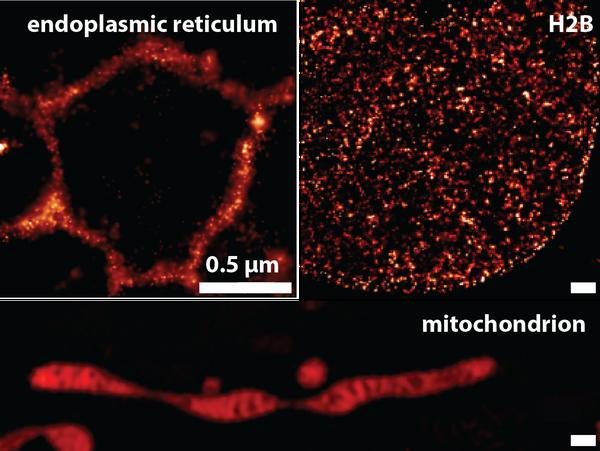Dimitris N. Chorafas Foundation Award 2016 – Lina Carlini

© 2016 Lina Carlini
Exploring dynamic organellar shape using live-cell fluorescence super-resolution microscopy, Thesis EPFL n°6968 (2016).
Thesis director: Prof. S. Manley
“For her outstanding contributions to the field of super-resolution fluorescence microscopy, with novel discoveries revealing the fundamental physical processes of organelle dynamics in living cells.”
In the past decade, several live-cell, fluorescence-based super-resolution imaging techniques have emerged. Among these is single-molecule localization microscopy (SMLM), which achieves unsurpassed spatial resolution compared to other fluorescence-based methods. This technique exploits the bright and dark state switching behavior of fluorophores, termed photoswitching. Despite its advantages, SMLM is limited by factors that prevent non-perturbative, fast, live-cell imaging.
We developed strategies to overcome challenges associated with live-cell SMLM. First, we identified a range of organelle stains, capable of photoswitching inside living cells. Unlike many dyes for SMLM, these do not require the need for toxic buffers and achieve imaging times down to a few seconds. Next, we examined the properties of reductively caged dyes. We found that single particle tracking experiments benefit from this labeling strategy since an order of magnitude more tracks can be imaged in a single experiment. To increase imaging speeds, we collaborated on the development of 2D and 3D high-density reconstruction algorithms. With these novel methods, we could acquire live SMLM snapshots in just 2 s. We also worked to eliminate a prevalent optical distortion, that warps structures in 3D SMLM. Finally, we apply many of these tools to study the biophysics of mitochondrial division.
